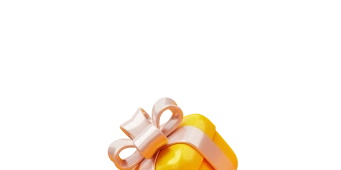Why Does My Dog Rub His Face on the Carpet?
Have you ever noticed your beloved furry friend rubbing their face vigorously against the carpet? It’s a peculiar behavior that many dog owners have witnessed, leaving them wondering what prompts this unusual action. While it may seem odd or even comical, there are several reasons behind this behavior that are worth exploring.
Dogs engage in various behaviors to communicate their needs, emotions, and physiological sensations. One such behavior is face rubbing, which can manifest in different ways, such as rubbing their muzzle, cheeks, or even their entire face against surfaces like carpets, furniture, or walls. This behavior can be observed in dogs of all breeds, sizes, and ages.
One possible explanation for this behavior is the need to alleviate itching or irritation. Dogs can experience discomfort due to allergies, insect bites, or skin conditions like dermatitis. When they rub their face against the carpet, they may be attempting to relieve the itchiness or discomfort they are feeling. It’s essential to monitor their skin for any signs of redness, rashes, or excessive scratching, as these may indicate an underlying issue requiring veterinary attention.
Another reason dogs rub their faces on the carpet is to mark their territory. Dogs have scent glands located on their faces, particularly around their cheeks. By rubbing their face on surfaces, they leave behind their scent, which acts as a form of communication to other dogs. This behavior is instinctual and serves as a way for dogs to establish their presence and mark their territory.
Furthermore, face rubbing can also be a self-soothing mechanism for dogs. Just like humans, dogs can experience stress, anxiety, or even boredom. Engaging in repetitive behaviors, such as face rubbing, can provide them with a sense of comfort and relief. However, if this behavior becomes excessive or obsessive, it may indicate an underlying anxiety or compulsive disorder that requires professional intervention.
Understanding why your dog rubs their face on the carpet is crucial for their overall well-being. By identifying the root cause, you can take appropriate measures to address any underlying issues and ensure their comfort and happiness. In the following sections, we will delve deeper into the main factors contributing to this behavior and provide practical recommendations to help you manage and prevent excessive face rubbing in your furry companion.
Now that we have explored the various reasons behind this peculiar behavior, let’s delve into the main text and examine each factor in more detail.
The Reasons Behind Dogs Rubbing Their Faces on the Carpet
Allergies and Irritation
One of the primary reasons why dogs rub their faces on the carpet is to alleviate itching or irritation. Dogs, like humans, can suffer from allergies triggered by various factors such as pollen, dust mites, or certain foods. These allergies can cause discomfort and itchiness, particularly in sensitive areas like the face. By rubbing their face on the carpet, dogs attempt to relieve the itchiness temporarily. If you notice your dog frequently engaging in face rubbing, it is essential to consult with a veterinarian to identify and address any underlying allergies or skin conditions.
Marking Territory
Dogs have scent glands on their faces, particularly around their cheeks. When they rub their face on the carpet, they are leaving behind their scent as a way to mark their territory. This behavior is instinctual and serves as a form of communication to other dogs, indicating that the area has been claimed. It is worth noting that intact male dogs may be more prone to this behavior as they have higher levels of testosterone, which increases their desire to mark their territory.
Self-Soothing and Stress Relief
Just like humans, dogs can experience stress, anxiety, or boredom. Face rubbing can be a self-soothing mechanism for dogs, providing them with comfort and relief. It is akin to humans engaging in repetitive behaviors like nail-biting or hair-twirling when feeling anxious. However, if the face rubbing becomes excessive or obsessive, it may indicate an underlying anxiety or compulsive disorder. In such cases, it is advisable to seek guidance from a professional dog behaviorist or veterinarian to address the underlying cause and provide appropriate management strategies.
Exploration and Sensory Stimulation
Dogs rely heavily on their sense of smell to explore and understand the world around them. When they rub their face on the carpet, they are not only leaving their scent but also gathering information about their environment. Carpets, being porous and capable of trapping scents, offer a rich sensory experience for dogs. By rubbing their face on the carpet, they can pick up various scents left behind by other animals, humans, or even food particles. This behavior allows them to gather information and satisfy their natural curiosity.
Conclusions
Understanding why dogs rub their faces on the carpet is essential for their well-being. It can be a result of allergies, a way to mark territory, self-soothing, or an exploration of their environment. While occasional face rubbing is normal, excessive or obsessive behavior may require intervention. If you notice any signs of discomfort, persistent itching, or compulsive face rubbing, it is recommended to consult with a veterinarian or dog behaviorist. They can help identify any underlying issues and provide appropriate guidance and management strategies to ensure your furry friend’s comfort and happiness.
Practical Recommendations to Manage Face Rubbing Behavior
1. Address Allergies and Irritations
If you suspect that allergies or irritations are causing your dog to rub their face on the carpet, it is crucial to consult with a veterinarian. They can help identify the specific allergens and recommend appropriate treatments or dietary changes. Regular grooming and bathing can also help reduce allergens on your dog’s coat and skin. Additionally, keeping your home clean and free from dust and other potential irritants can provide relief for your furry friend.
2. Provide Alternative Soothing Behaviors
To redirect your dog’s face rubbing behavior, provide alternative soothing activities. Engage them in interactive play sessions, offer puzzle toys, or provide chew toys designed to promote dental health. These activities can help distract and redirect their focus away from face rubbing. Additionally, consider providing a comfortable and safe space, such as a cozy bed or crate, where your dog can retreat when feeling anxious or stressed.
3. Enrich Your Dog’s Environment
To prevent boredom and reduce stress, ensure your dog’s environment is enriched with various sensory experiences. Take them for regular walks to explore different scents and provide mental stimulation. Incorporate interactive toys, treat-dispensing puzzles, and training sessions into their daily routine. Engaging your dog in physical and mental activities can help reduce the need for excessive face rubbing as they will be occupied and fulfilled.
4. Seek Professional Guidance
If your dog’s face rubbing behavior becomes excessive, compulsive, or is accompanied by other concerning symptoms, it is advisable to seek professional guidance. A certified dog behaviorist or veterinarian specializing in behavior can assess your dog’s specific situation and provide tailored recommendations. They may suggest behavior modification techniques, training exercises, or even medication in severe cases to address any underlying anxiety or compulsive disorders.
5. Maintain Consistent Grooming Practices
Regular grooming practices can help maintain your dog’s skin health and reduce the likelihood of itchiness or irritation. Brushing your dog’s coat regularly helps remove loose fur and prevents matting, which can contribute to discomfort. Additionally, ensure their ears are clean and free from wax buildup, as ear infections can also cause face rubbing. Consult with a professional groomer for guidance on appropriate grooming techniques and products suitable for your dog’s breed and coat type.
6. Monitor and Minimize Stressors
Identify and minimize any potential stressors in your dog’s environment. This may include loud noises, changes in routine, or interactions with unfamiliar animals or people. Create a calm and predictable environment for your dog by maintaining a consistent schedule, providing a designated quiet area, and using positive reinforcement techniques during training. Minimizing stress can help reduce the likelihood of face rubbing as a self-soothing response.
Remember, every dog is unique, and what works for one may not work for another. Patience, consistency, and understanding are key when addressing face rubbing behavior. By implementing these practical recommendations and seeking professional guidance when needed, you can help your dog find healthier and more appropriate ways to meet their needs and ensure their overall well-being.





















